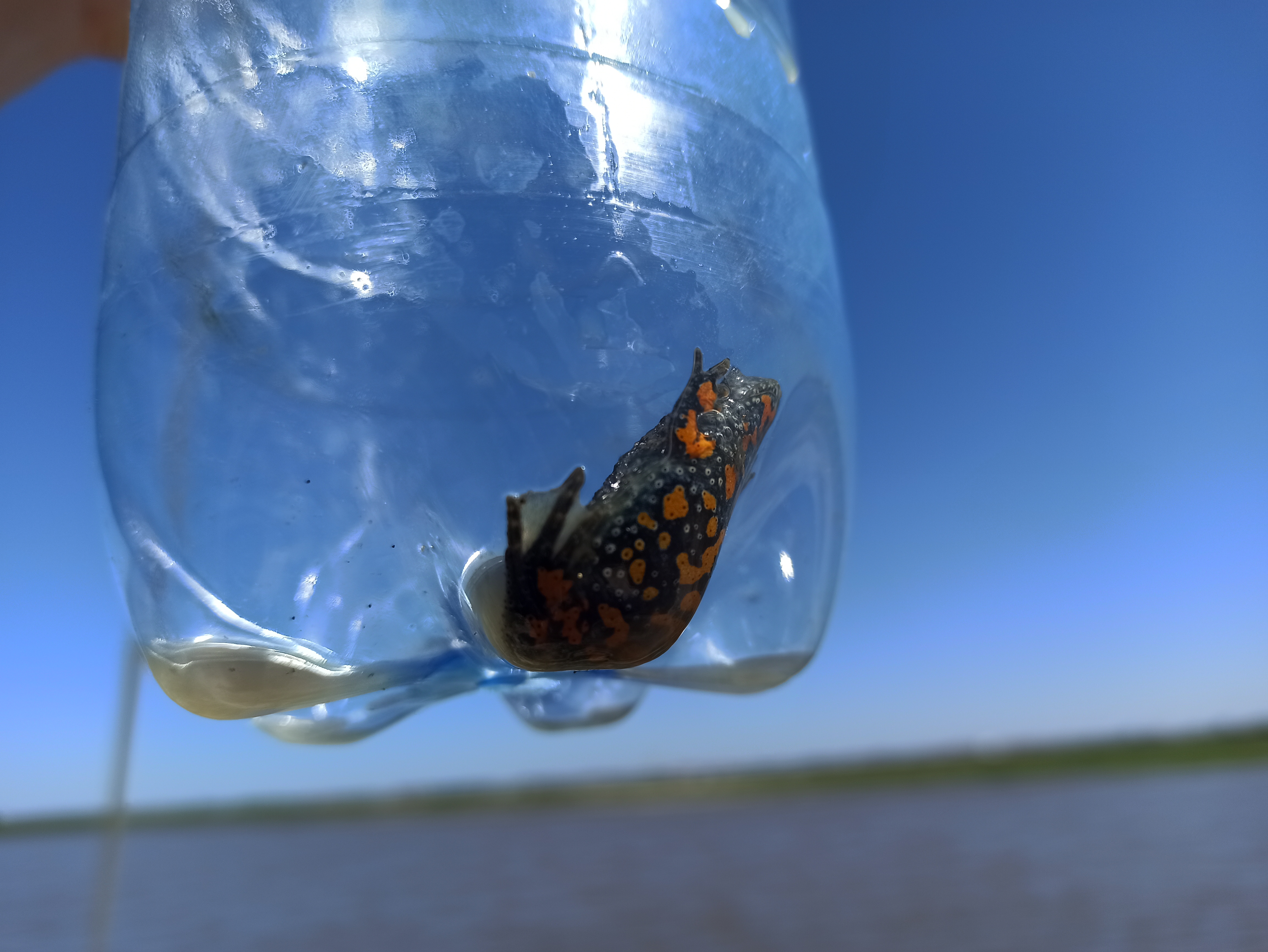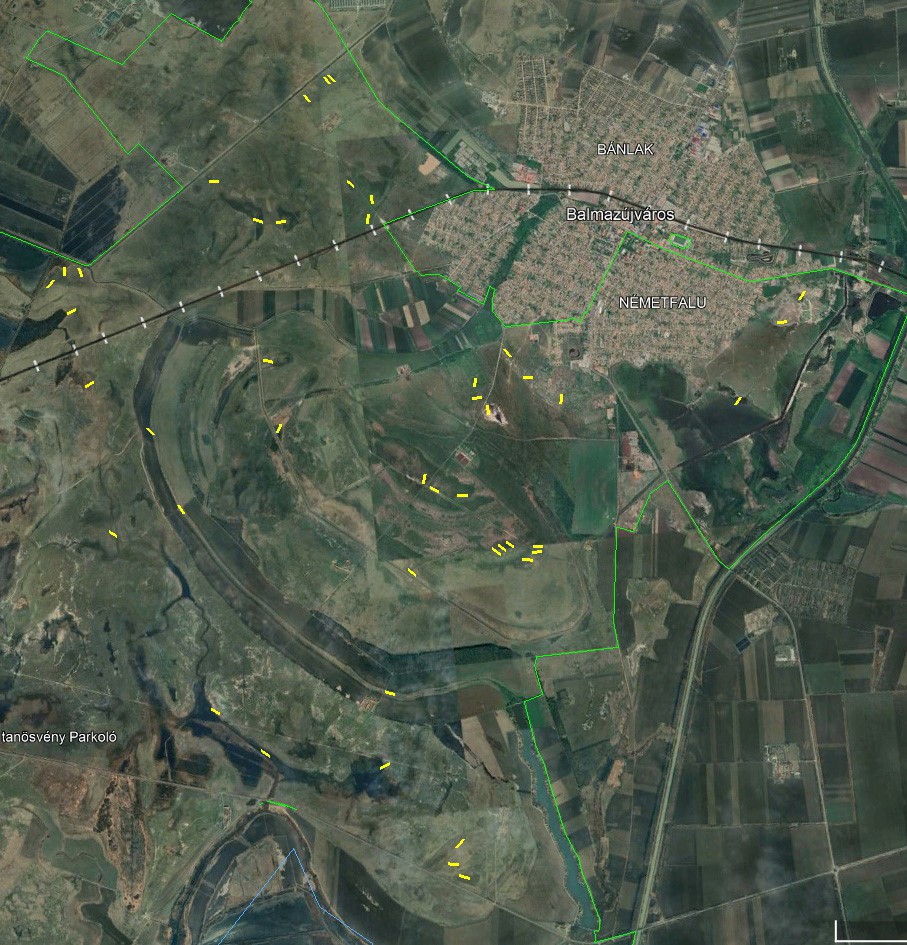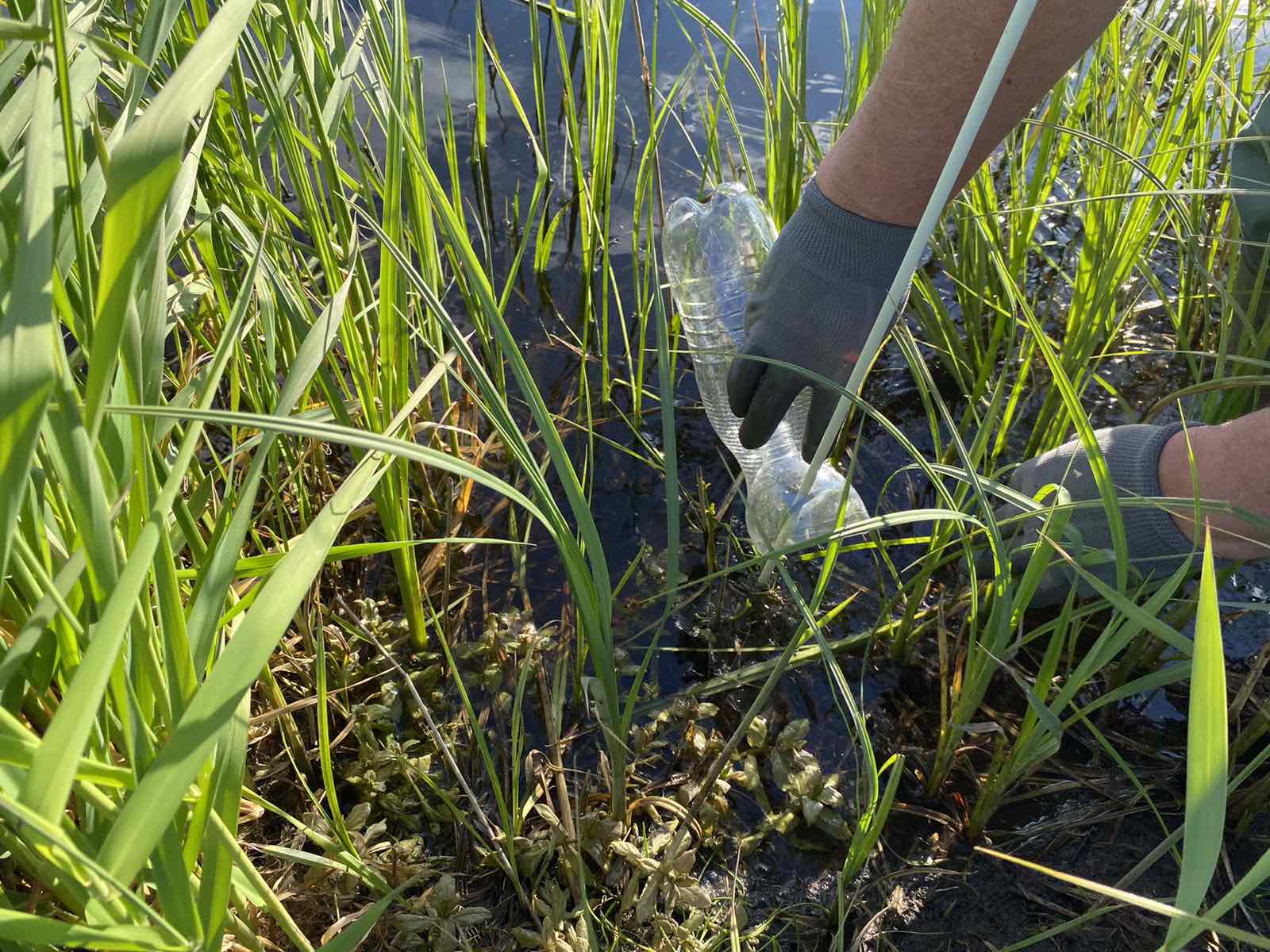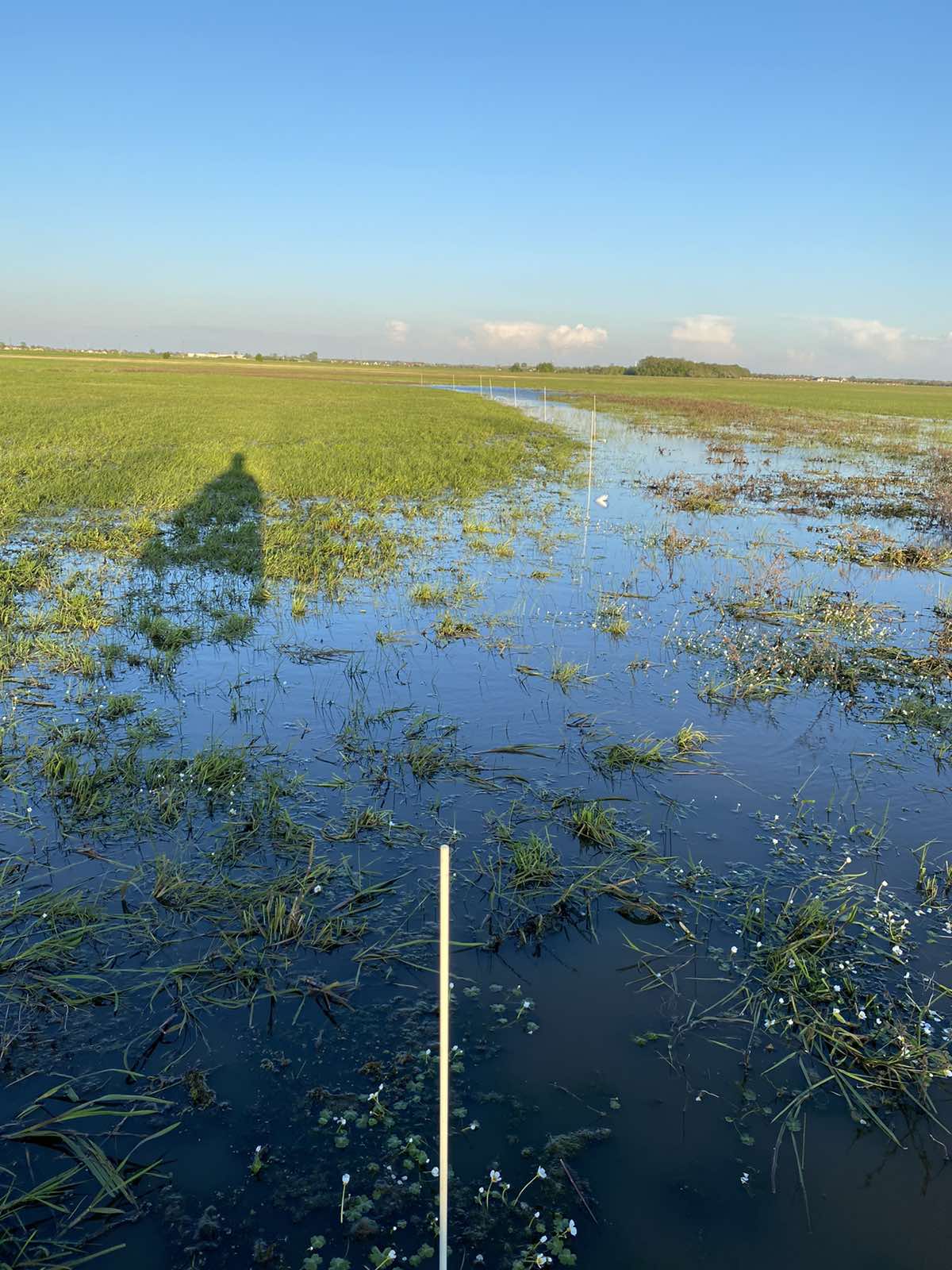Latest news:
Report by Tamás Zalai

European Fire-bellied Toad (Bombina bombina)
Wetland rehabilitation is successful if the maximum number of organisms characteristic of the water body is maintained in the area.
Accordingly, changes in the abundance of amphibian priority species of Natura 2000 occurring on the site will be monitored during the project.
Monitoring of the European Fire-bellied Toad (Bombina bombina) will be carried out using a strip transect method. In 15 water bodies, three 10 m wide strip transects per water body have been established across the wetland. The transects were surveyed by observation and by sound to determine the number of individuals detected. Surveys were carried out once each in April, May and June.
Location of the fifteen transects, three to three per water body

The species was not found in three transects on any of the following sites
- Cigli1
- Cigli2
- Csűrhekúti-lapos1.
These wetlands had no water cover, which explains the lack of amphibian sightings. For the other wetland bodies, at least one target species was found. European Fire-bellied Toad were not detected in the last stage of the survey, in the dried transects. Detection of the species was more significant when water surface area was larger and water depth was variable even within transects. Neither weather nor livestock-related movements or changes affected the survey. Following the contraction of the water bodies, there was a slight concentration between the extent of the water bodies and the numbers of individuals observed.
Mean water depths (averages of the three transects) and numbers of individuals observed and heard
Newt monitoring (trapping method)
The newt monitoring was carried out between 16 April and 17 May. Converted plastic bottles (10 per unit) were placed in a row every ten meters per sample area, monitored and collected in the late afternoon and the following morning. The traps were fixed with plastic sticks clearly visible above the water. The diameter of the sticks did not allow birds, for example, to land on them and potentially prey on their contents by approaching them. Where possible, the traps were set at different water depths. In the case of Cigli-tó, traps were not placed in the area because there was no suitable continuous water surface and water depth for placing them, even in the first instance.

Installation of Newt traps

Newt traps
Nothing was caught in the first sampling round, probably because the water was too cold. On subsequent occasions, both larvae and adults of Great Diving Beetle (Dytiscus marginalis) were found in the traps. There were also small numbers of European Fire-bellied Toad (Bombina bombina). No newt species were captured during the protocol survey, considering the combined stage of development of the individuals.





